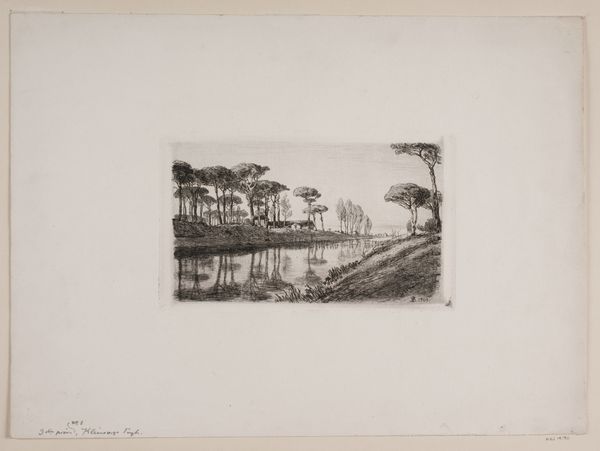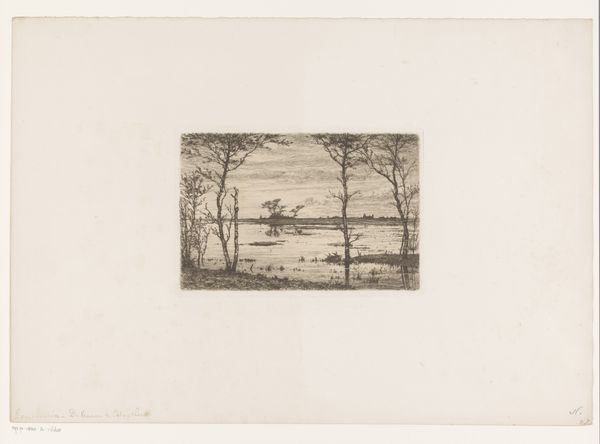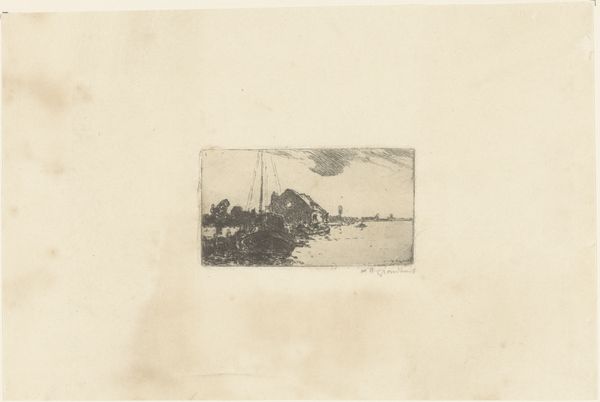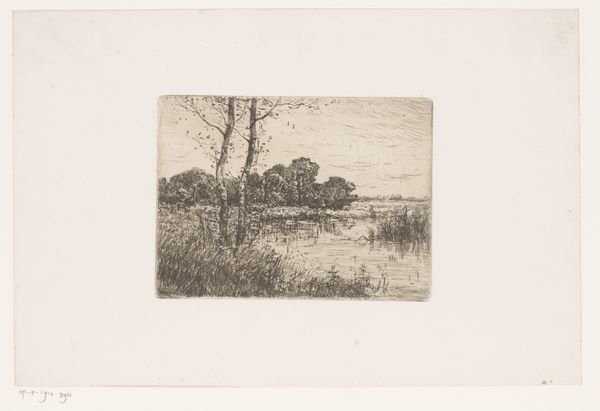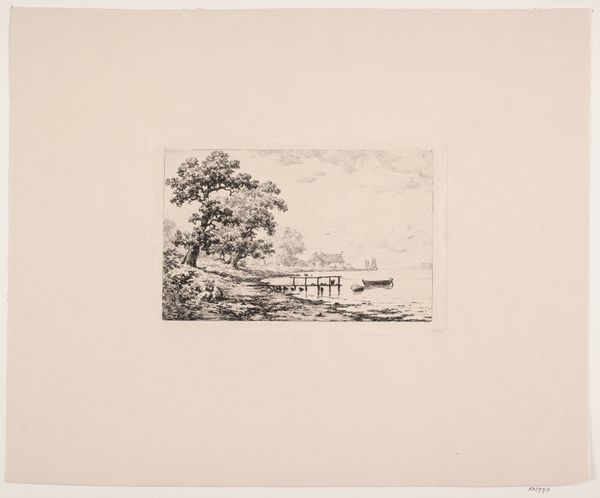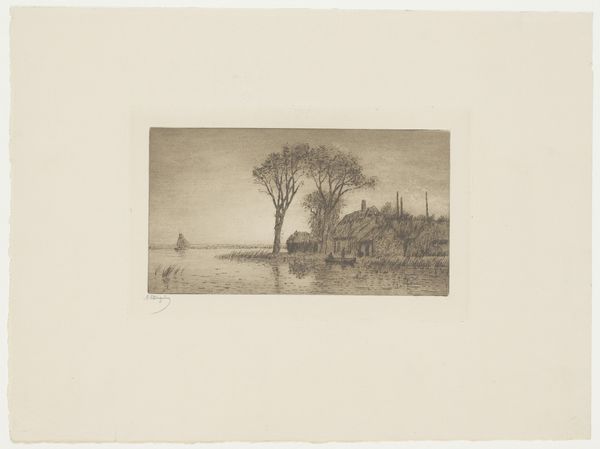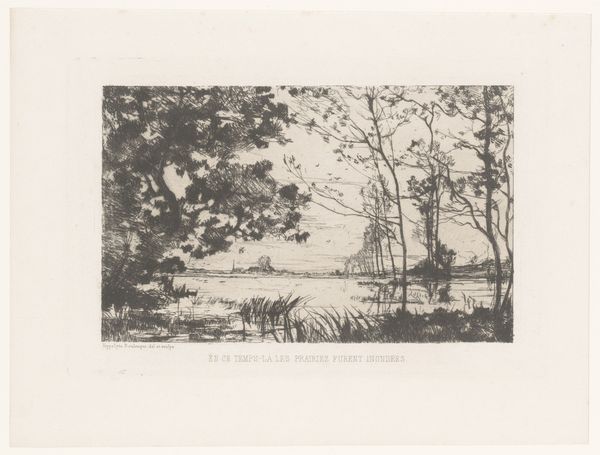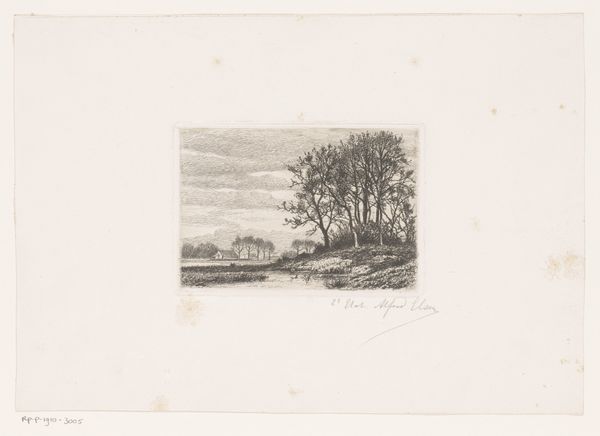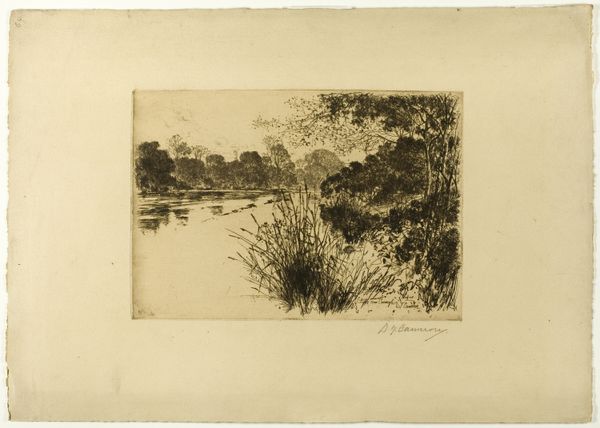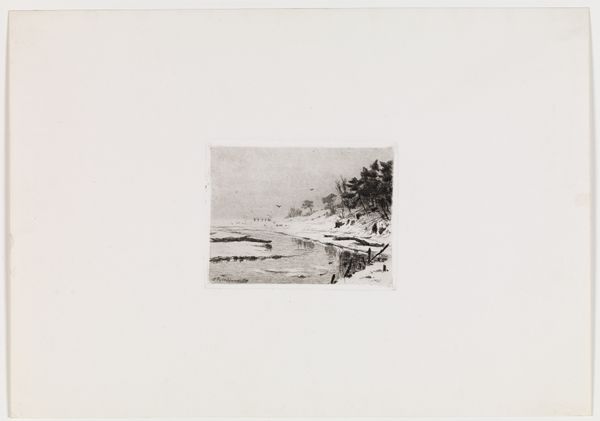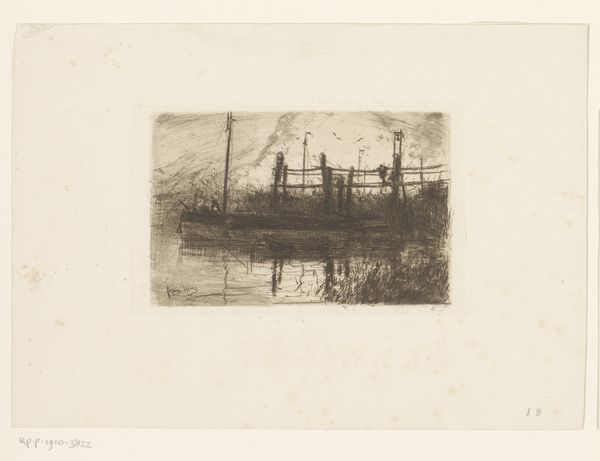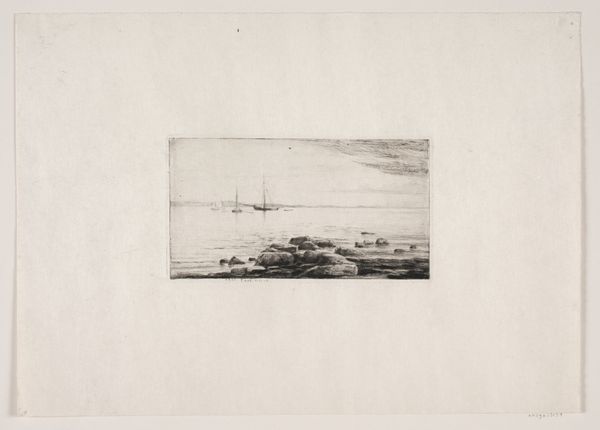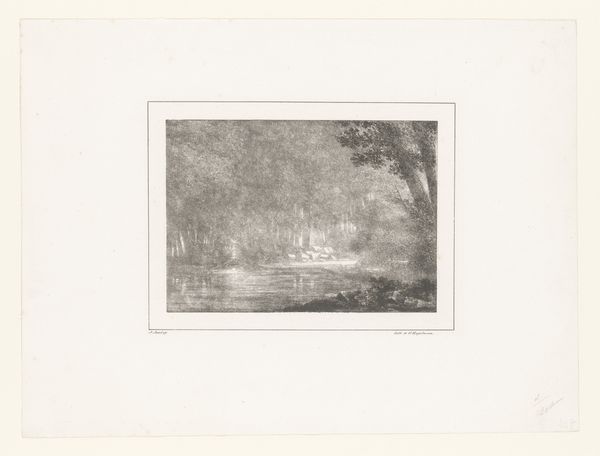
Dimensions: 124 mm (height) x 208 mm (width) (Plademål)
Editor: We're looking at "Pinjeskoven ved Classe," or "Pine Forest near Classe," an etching made around 1900 by Niels Skovgaard. There's something so tranquil about it, this stand of trees reflected in the water. What stands out to you? Curator: The etching presents a compelling interplay of line and light, a crucial aspect of Skovgaard's technique. Note the density of hatching in the foreground, especially along the embankment. Observe how this contrasts with the lighter, more diffuse treatment of the sky. Editor: I see that! The trees are also darker, almost a solid mass. Is that typical for etchings? Curator: It is a common characteristic, yes. However, examine the variations within that darkness. Skovgaard uses a sophisticated layering of lines to suggest volume and texture within the tree canopies. Furthermore, the reflections on the water's surface are not mere repetitions but a distorted echo, adding depth. What effect does that asymmetry produce? Editor: It keeps the eye moving. The reflections are less precise, more fluid. It stops it from being static. Did Skovgaard do anything else to enhance the composition? Curator: Consider the placement of the horizon line, bisecting the image. Is it a simple division? Not quite. The darker foreground and trees create a weighted base, countered by the atmospheric lightness above. The formal arrangement supports an introspective atmosphere. Editor: That makes sense. I initially saw it as just a pretty picture, but seeing how each element is carefully constructed changes everything. Curator: Indeed. Analyzing the formal structure reveals the depth of intention behind even the most seemingly simple landscape. Editor: Thank you; I'll never look at landscapes the same way!
Comments
No comments
Be the first to comment and join the conversation on the ultimate creative platform.
